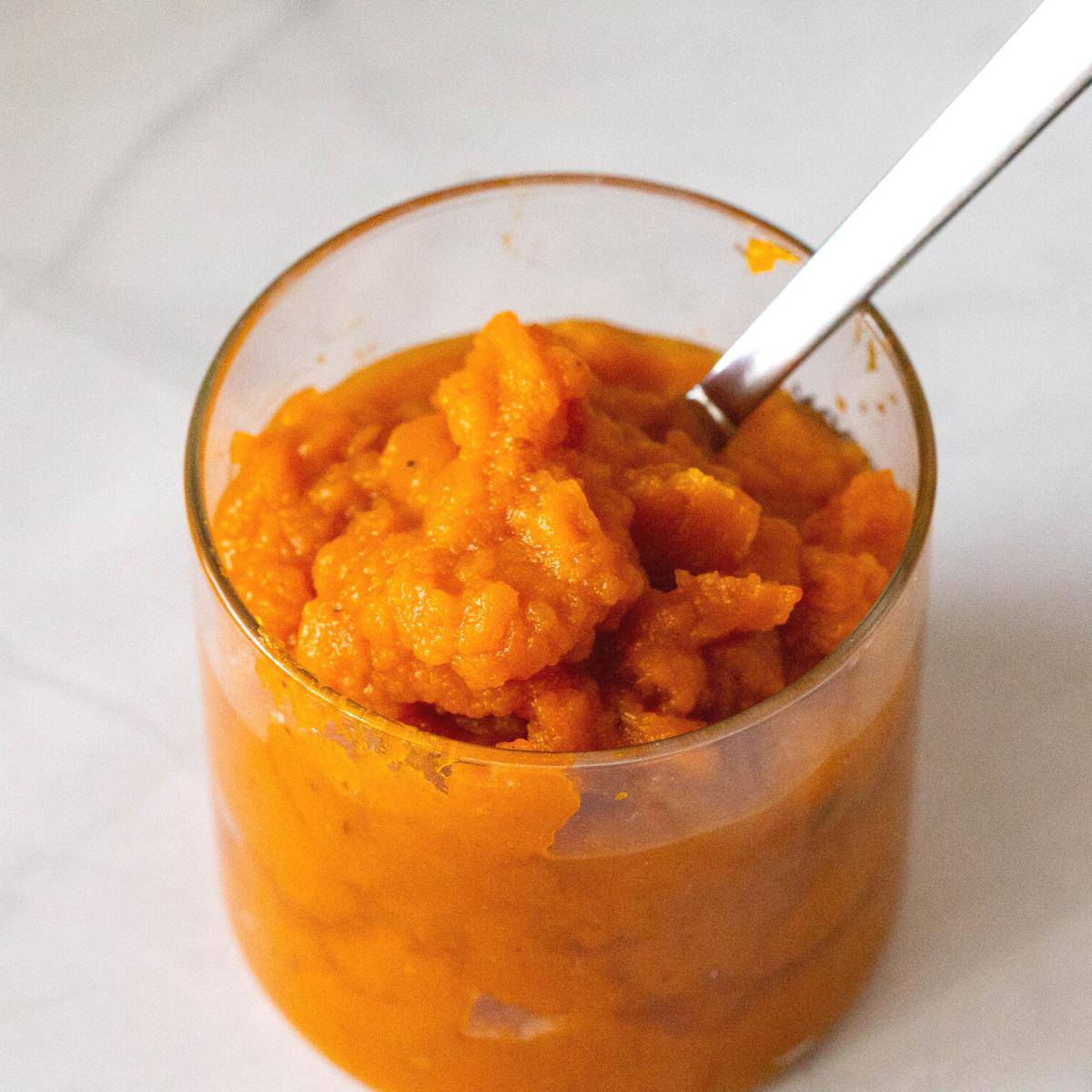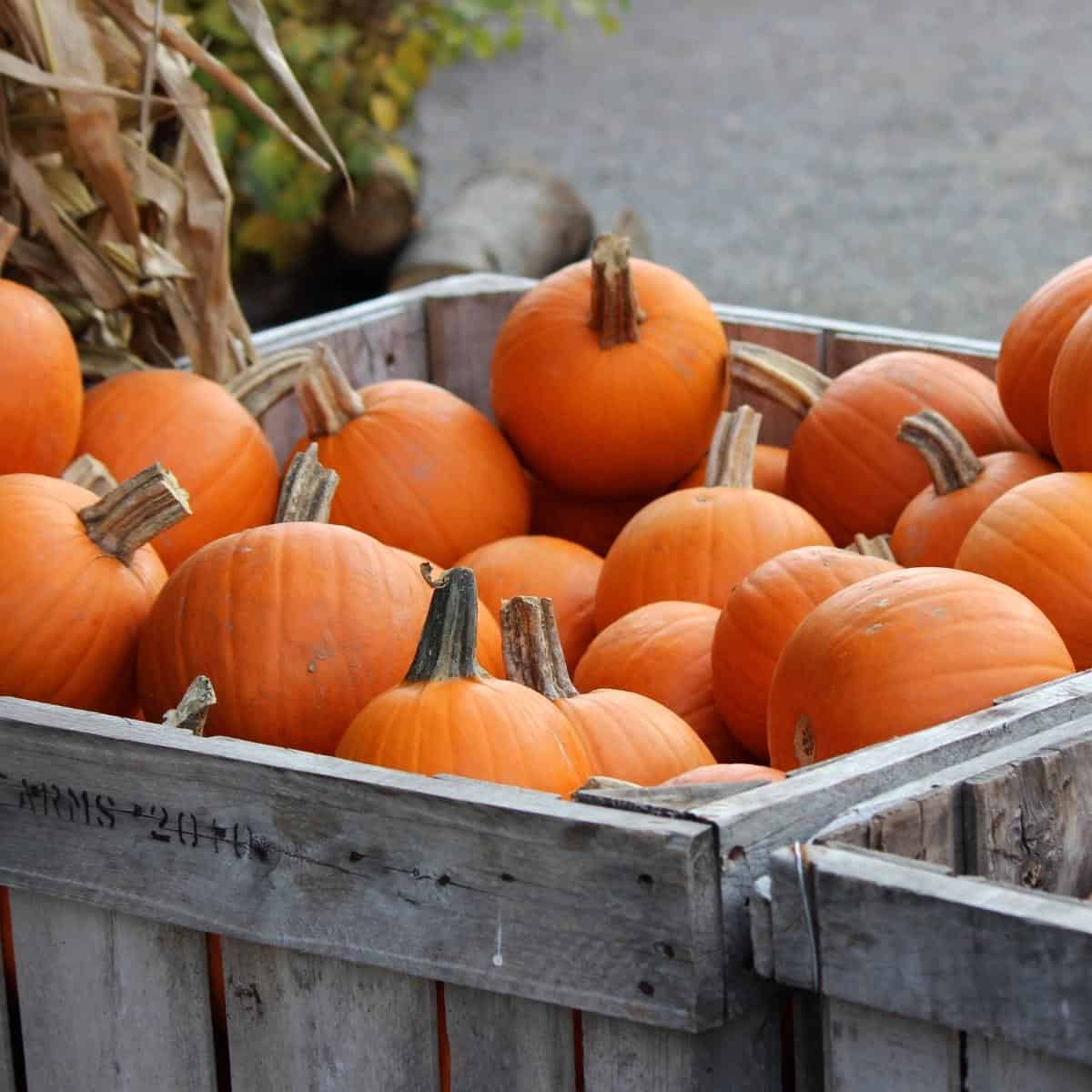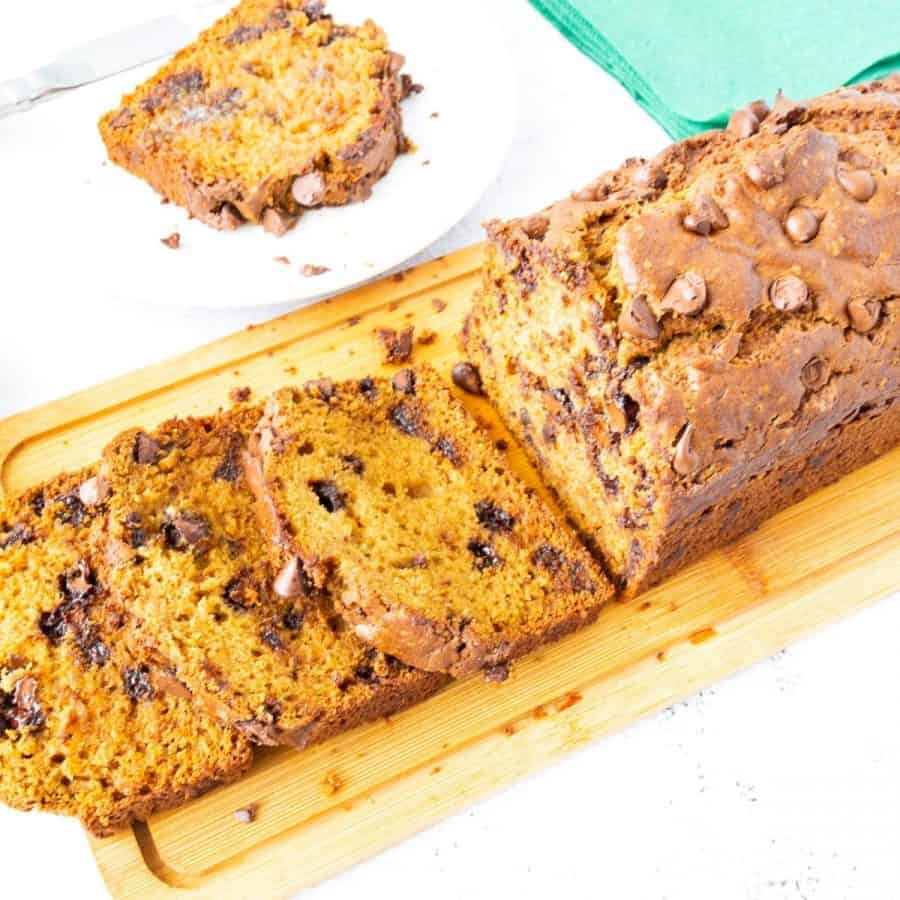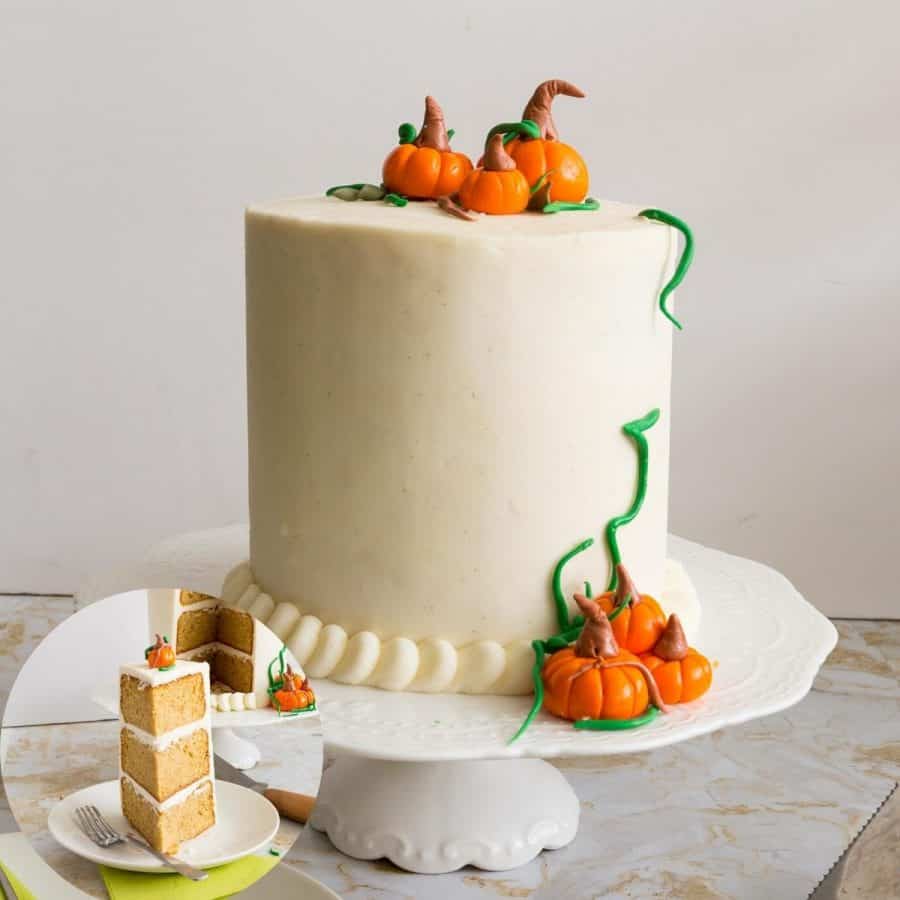We make so many pumpkin recipes in fall because pumpkins are in season. But, the irony is that we use canned pumpkin. The truth is that making homemade puree is so simple and easy. I make a big batch and save it in the freezer so I can use it all thru fall. Today, I’m going to share with you everything you need to know about making homemade pumpkin puree. I have shared over 20 pumpkin recipes with you so far and each and every one of them you can use this homemade puree.
Why make your own pumpkin puree
The answer is simple: store-bought options can’t compare. When you take the time to make your own puree, you have complete control over the quality, flavor, and texture of the final product. Refrain from settling for lackluster alternatives that fail to capture the essence of fall. One of the biggest advantages of making your own pumpkin puree is selecting the ideal pumpkin for the job. While store-bought options often use generic pumpkin varieties, you can choose the perfect pumpkin that meets your preferences. Whether you prefer a sweeter flavor or a more robust taste, you can tailor your puree to suit your palate. Furthermore, by making your own puree, you can ensure that it is free from any additives or preservatives that can sometimes be found in store-bought products. You’ll have peace of mind knowing exactly what goes into your puree and can savor fresh pumpkin’s natural, wholesome goodness. Not only is making pumpkin puree a culinary adventure, but it’s also a cost-effective option. Pumpkins are readily available during the fall season, and purchasing one to make your own puree can be a budget-friendly alternative to buying pre-packaged versions. Plus, you’ll likely end up with more puree than you need for a single recipe, allowing you to store the excess for future pumpkin-inspired creations.
Choosing the Ideal Pumpkin
First and foremost, look for pumpkins labeled explicitly as “pie pumpkins” or “sugar pumpkins.” These varieties are smaller, sweeter, and have a smoother texture than their larger counterparts. While you may be tempted to grab any pumpkin from the pile, opting for these designated varieties will provide a more flavorful and velvety puree. Size also matters when it comes to choosing the ideal pumpkin. Look for pumpkins that are between 4 to 8 pounds, as they tend to have a higher concentration of sugars, resulting in a sweeter puree. Smaller pumpkins are generally easier to handle and roast evenly, while larger ones may take longer to cook and can sometimes have a more watery consistency. Inspect the pumpkin for visible flaws, such as bruises, cracks, or mold. You want a firm and unblemished pumpkin, as these imperfections can affect the quality of your puree. A smooth, unbroken skin indicates a healthier pumpkin that will yield a better result. Color can also give you a clue about the pumpkin’s potential. Look for pumpkins with a deep, vibrant orange color. This indicates that the pumpkin is fully ripened and packed with those delicious flavors you’re after. Avoid pumpkins with green patches or a pale orange hue, as they may have yet to reach their optimal ripeness and can lack the rich flavor you desire. Remember, making pumpkin puree is a labor of love, and choosing the right pumpkin sets the stage for a successful outcome.
Preparing the Pumpkin for Roasting
Start by thoroughly rinsing the pumpkin under cool water to remove dirt or debris. Pat it dry using paper towels or a clean cloth. Next, using a sharp knife, carefully remove the stem by cutting a circular incision around it. This will make it easier to slice the pumpkin in half. With one hand firmly holding the pumpkin, use the other hand to guide the knife down the center. Apply gentle, even pressure to create two hemispheres. Once you have halved the pumpkin, scoop out the seeds and fibrous strands using a spoon or an ice cream scoop. Set the seeds aside if you plan on roasting them separately. Removing these innards will allow the pumpkin to roast evenly and prevent unwanted stringiness in your puree.
Roasting the Pumpkin to Perfection
To begin, preheat your oven to 375°F (190°C). While the oven is warming up, place the cleaned and halved pumpkin halves on a baking sheet, cut side down. This will allow the heat to circulate evenly and cook the pumpkin thoroughly. As the pumpkin roasts in the oven, its flesh will soften and caramelize, creating a delectable aroma filling your kitchen. The roasting process typically takes about 45 to 60 minutes, but keep an eye on it as cooking times may vary depending on the size and thickness of your pumpkin. When the pumpkin is ready, the flesh should be tender and easily pierced with a fork. You’ll also notice that the edges have turned a beautiful golden brown color. This indicates that it has roasted to perfection and is ready to be transformed into a luscious puree. Once you remove the pumpkin from the oven, allow it to cool slightly before handling. This will make it easier to scoop out the flesh, which should easily separate from the skin. Use a spoon or a sturdy spatula to gently scrape the pumpkin flesh away from the skin, ensuring you collect every bit of the roasted goodness.
Blending into Smooth and Velvety Puree
Blending the roasted pumpkin flesh is a crucial step in the puree-making process. It’s what will give your puree that creamy, luscious texture that can elevate any dish. You can use a few different methods to achieve this smooth consistency, depending on the tools you have available in your kitchen.
One popular option is to use a food processor. Transfer the roasted pumpkin flesh to the bowl of your food processor and secure the lid. Pulse the pumpkin in short bursts, scraping down the sides as needed until you achieve a smooth puree. This efficient method yields excellent results, especially if you prefer a slightly chunkier texture. If you don’t have a food processor, fret not! You can still achieve a silky puree using a blender. Add the roasted pumpkin flesh to your blender in batches and blend quickly until smooth. Be sure to hold down the lid tightly, as the hot steam from the pumpkin can cause it to pop off. Keep blending until the puree is velvety and free of any lumps. A handheld immersion blender can do the trick for those who prefer a hands-on approach. Place the roasted pumpkin flesh in a large bowl or pot and use the immersion blender to blend it directly in the container. Move the blender around to ensure all the pumpkin is pureed evenly until you achieve the desired consistency.
Roasting determines the color of the pumpkin puree
The roasting process essentially involves cooking the pumpkin at a high heat, which causes it to turn a golden-brown color. Additionally, it also breaks down the natural starch in the puree, releasing natural sugars and other flavors that can contribute to the final taste of the dish. The result is a richer, more caramelized flavor than its raw counterpart. Roasting also reduces the puree’s water content, making it easier to use in recipes requiring the puree to be thickened or concentrated for a specific flavor.
Pumpkin Cream Cake with whipped cream buttercream Easy Pumpkin Spice Cake – with no-butter cream cheese frosting Pumpkin Spice Latte Cake with Maple Buttercream Pumpkin Cafe Latte Cake Mini Pumpkin Cake Donuts
Tips for making pumpkin puree
Firstly, when selecting your pumpkin for pureeing, choose a variety specifically meant for cooking, such as sugar pumpkins or pie pumpkins. These types are smaller, sweeter, and have denser flesh, which makes them perfect for pureeing. Avoid using larger pumpkins, as they tend to have a more fibrous texture and less flavor. Once you’ve chosen the right pumpkin, properly preparing it for pureeing is essential. Start by washing the pumpkin thoroughly to remove any dirt or debris. When it comes to cooking the pumpkin, there are a few methods you can choose from. The most common way is to roast the pumpkin halves in the oven until they become tender. This not only enhances the natural sweetness of the pumpkin but also helps to evaporate any excess moisture, resulting in a richer and more concentrated puree. Alternatively, you can also steam the pumpkin halves. This method is faster and helps to retain more of the pumpkin’s nutrients. Place the halves in a steamer basket and steam until they are easily pierced with a fork. Steaming is a great option if you’re short on time or prefer a lighter, less caramelized flavor. No matter which cooking method you choose, remember to keep an eye on the pumpkin halves and remove them from the heat as soon as they are soft and fork-tender. Overcooking can lead to a watery puree, so finding the right balance is essential. Once your pumpkin is cooked and cooled, it’s time to remove the flesh and turn it into a luscious puree. You can either scoop out the meat with a spoon or use a spoon to scrape it away from the skin. Squeeze any excess moisture using a cheesecloth or a clean kitchen towel, which will help achieve a smoother final texture.
Easy pumpkin cupcakes Pumpkin creme brûlée Classic Pumpkin Souffle.Best Pumpkin muffins Pumpkin Cream Cake with whipped cream buttercream
Frequently asked questions
Creative ways to use pumpkin puree
Sweet Uses:
Pumpkin Smoothie: Blend pumpkin puree with bananas, Greek yogurt, almond milk, honey, and pumpkin pie spice for a nutritious drink. Pumpkin Pancakes or Waffles: Incorporate the puree into your batter for a seasonal breakfast treat. Pumpkin Ice Cream: Use in homemade ice cream recipes for a creamy, autumn-inspired dessert. Pumpkin Pudding: Combine pumpkin puree with milk, sugar, cornstarch, and spices, then heat until thickened. Pumpkin Oatmeal: Mix pumpkin puree into your morning oatmeal with a sprinkle of cinnamon and a drizzle of maple syrup. Pumpkin Butter: Cook pumpkin puree with sugar, apple cider, and spices until thickened, then spread on toast or muffins. Pumpkin Lattes: Create your own homemade version by adding pumpkin puree and spices to brewed coffee, then top with frothed milk. Pumpkin Cheesecake: Upgrade your classic cheesecake with a swirl of pumpkin puree and autumn spices.
Savory Uses:
Pumpkin Soup: Sauté onions, garlic, and seasonings, then add pumpkin puree, vegetable, or chicken broth, and simmer. Blend for a creamy soup. Pumpkin Pasta Sauce: Make a creamy sauce by simmering pumpkin puree with garlic, onions, sage, broth, and a touch of cream. Serve over pasta. Pumpkin Hummus: Blend pumpkin puree with chickpeas, tahini, lemon juice, garlic, and spices for a fall-themed dip. Pumpkin Risotto: Incorporate pumpkin puree into a creamy risotto for a comforting, rich dish. Pumpkin Chili: Add pumpkin puree to your traditional chili recipe for added depth and creaminess. Pumpkin Biscuits: Mix pumpkin puree into biscuit dough for moist and flavorful biscuits. Pumpkin Mashed Potatoes: Combine pumpkin puree with mashed potatoes for a colorful and flavorful twist. Pumpkin Curry: Use pumpkin puree as a base for a creamy, spiced curry.
Did you LIKE this recipe? Save it for later. You can find my recipes on Pinterest. Follow me on Facebook, Twitter, and Instagram.Subscribe, and I’ll send you new recipes right to your inbox. 18 must-try pumpkin recipes this fall. Thank you for sharing - Save for later

























